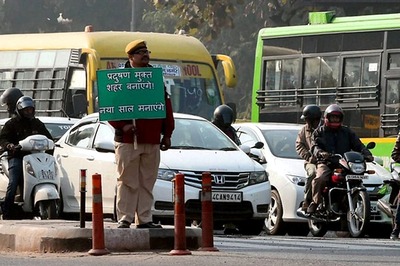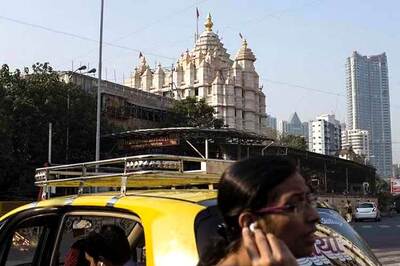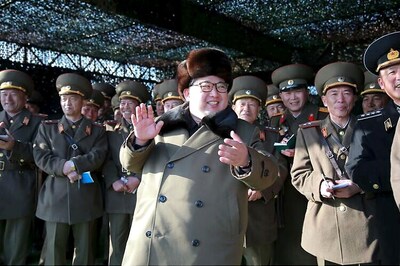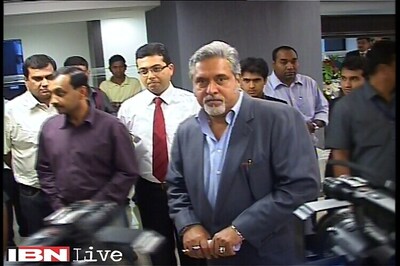
views
The popular terms like ‘Litchi Havoc’, Chamki Bhukar’, ‘Killer Encephalitis’, ‘Deadly Litchi Toxin’ that are being used to report the epidemic in Bihar point to the dismal methods of investigating a disease in India. For, it only serves the purpose of headlines.
In June 2019, the cyclic return of Acute Encephalitis Syndrome (AES) or Chamki fever to one of India’s poorest and malnourished states, Bihar, lead to hospitalisation of 309 children in Muzaffarpur.
Although over hundred children have already been cured and discharged from Sri Krishna Medical College and Hospital (SKMCH), the death of 85 children at the hospital after a gap of four years necessitates a four-part enquiry into the investigation of the outbreak: identification, causation, confusion and malnutrition.
Identification
The broad characteristics of AES defines it as a group of clinically similar neurologic manifestations caused by several different viruses, bacteria, fungus, parasites, chemicals or toxins etc.
Dr. TJ John, former president of the Indian Association of Pediatrics (IAP) and Emeritus Professor of Virology at the Christian Medical College in Vellore, has called AES “a meaningless term” given that “any brain disease in the child may be called AES”.
“AES is a term used by untrained health workers to say that a child has some brain disease like convulsion, unconsciousness etc. But when a doctor examines the child, he must conclude which kind of AES disease it is: encephalitis (virus causing brain inflammation), meningitis (swelling of the protective membranes covering the brain and spinal cord), encephalopathy (broad term for any brain disease that alters brain function or structure) or cerebral malaria (severe neurological complication of infection with Malaria),” he told News18.
Dr John said a doctor must figure out the right disease between these four main categories when a case called AES is referred by a health worker. One of his many concerns is the casual use of the term AES by doctors.
Causation
On Sunday, Union minister Harsh Vardhan visited SKMCH in Muzaffarpur to take stock of the situation. Finding no fault in the lack of facilities at the hospital, he extended his support to doctors for their efficiency in dealing with the crisis and also promised to set up a “multi-disciplinary institute” to “identify the reason behind the disease”.
In Muzaffarpur, despite intensive study by experts from the National Centre for Disease Control (NCDC), New Delhi and the Center for Disease Control (CDC), Atlanta (USA), there are two competing theories of the epidemic: one, caused by heat stroke, and two, caused by a toxin in locally-grown fruit, litchi.
Speaking to News18, Dr Vipin Vashishtha, a member of the team that studied the epidemic in Muzaffarpur along with NCDC and CDC from 2011 to 2013, forwarded the litchi theory.
“Whether it is a litchi toxin or some mixed illnesses, the deaths have a strong relation with litchi cultivation,” he said.
Indeed, the report provided to the government by two expert teams had helped reduce the count of AES cases in Muzaffarpur after the 2014.
Dr John, who was also part of one expert team that identified the epidemic, said that malnourished children who ate litchis and went to sleep without a meal fell ill in the pre-Monsoon season between 4 am to 7 am.
This study formally established a relation between hypoglycemia or low blood sugar, found in children with poor nutrition who sleep hungry, and methylene cyclopropyl-glycine (MCPG), a toxic chemical found in litchis that affects the brain due to undernourishment.
But this narrative changed in 2019.
Confusion
News18 spoke to Dr Gopal Shankar, the acting HOD of the SKMCH, to understand the recent death of children in Muzaffarpur. Discrediting previously theories, he claimed that deaths occurred due to “acclimatisation failure in children” and instead were caused by “environmental factors” such as the heat wave and poor rainfall in the area.
“Earlier people thought that outbreak is caused by a virus. But it is a case of heat stroke causing these deaths. In the years 2005, 2011, 2013, 2014 and 2019, when temperature and humidity were recorded over consecutive days at more 38 degrees Celsius and 50 per cent respectively, the epidemic had been at its worse with over 700 dying in 2014 alone,” he said.
Dr Shankar added that in other parts of northern India there is fluctuation in temperature and humidity, and the nights are cooler, but in Muzaffarpur humidity increases at night making it worse than the day, especially for children.
He added that rainfall is the only remedy to this outbreak. “When it rained a few days ago, the following day witnessed a drop in the number of AES patients in the hospital. Now when it hasn’t rained, the numbers are increasing,” he said.
Refuting the litchi theory, Dr Shankar asked if people had stopped eating litchis during the years when there were no cases of AEC in Muzaffarpur. “Sick children also do not have symptoms of abdominal pain to prove the litchi theory,” he pointed out.
Interestingly, Dr Vashishtha had presupposed the return of the AES epidemic in a journal article in 2014 where he argued in favour of the dismal state of outbreak investigation in Muzaffarpur.
Describing the Muzaffarpur investigation as “five blind people describing an elephant” he said, “The problem is, each team starts with a fixed mindset and looks for the some infective pathology behind every outbreak. There is lack of coordination and synchronisation of efforts, and ultimately they waste their energy either duplicating the efforts of other or pursuing a different approach unmindful of other’s accomplishments”.
Malnutrition
Dr Arun Shah, a Muzaffarpur resident and former president of IAP in Bihar, who was part of the consultative task force to understand the epidemic, spoke to News18 to help assess the problem at the intersection of economic welfare and health.
“The human angle has always been ignored. It is criminal to say that the deaths are not a case of AES,” he said. “These deaths have had the same symptoms from the past two decades. Poor, malnourished children stay hungry and they pick up to eat anything they find in the gardens like litchis. The government in Bihar is trying to divert the issue of malnutrition instead of taking it up seriously.”
He added that the “time-lapse factor” or the time taken to reach a Primary Health Centres (PHC), and at times the availability of treatment in them, also is an issue to the poor.
“Children suffering from fever and convulsion early in the morning are brought to health centres after 6-8 hours. Some children are safe because they reach on time, while the rest attempt to make it to a nearest government hospital, thus reducing the chance of survival,” Dr Shah said.
Beyond deaths, for those who survive the disease, malnutrition also pushes them towards “a survival with neurological deficit”. He said, “Those who survive are so poor that they cannot go to the physiotherapist. The government is insensitive not to look after these children.”
According to Dr Shah, the deaths occurred in 2019 even after his team had given guidelines to the government to not allow children to go out a lot in the Summer, to ensure them a meal before sleep, and to prepare PHCs with supply and training to provide intravenous glucose in case of an attack.
The National Human Rights Commission (NHRC) on Monday sent notices to the health ministry and Bihar government over the increasing deaths of children in Muzaffarpur.
The apex rights body in India has sought a report on “not only vaccination, but all precautionary measures such as cleanliness and hygiene”. The NHRC has taken note that epidemic is a case of human rights violations of the victim children and their families.
“The state appears to have failed to protect the young innocent lives," the rights panel said in the statement.




















Comments
0 comment